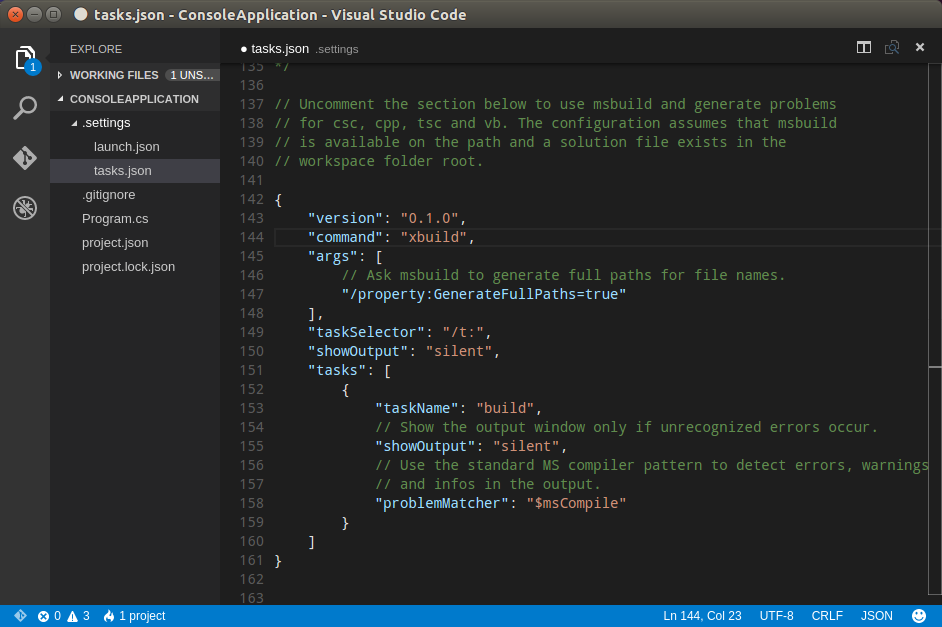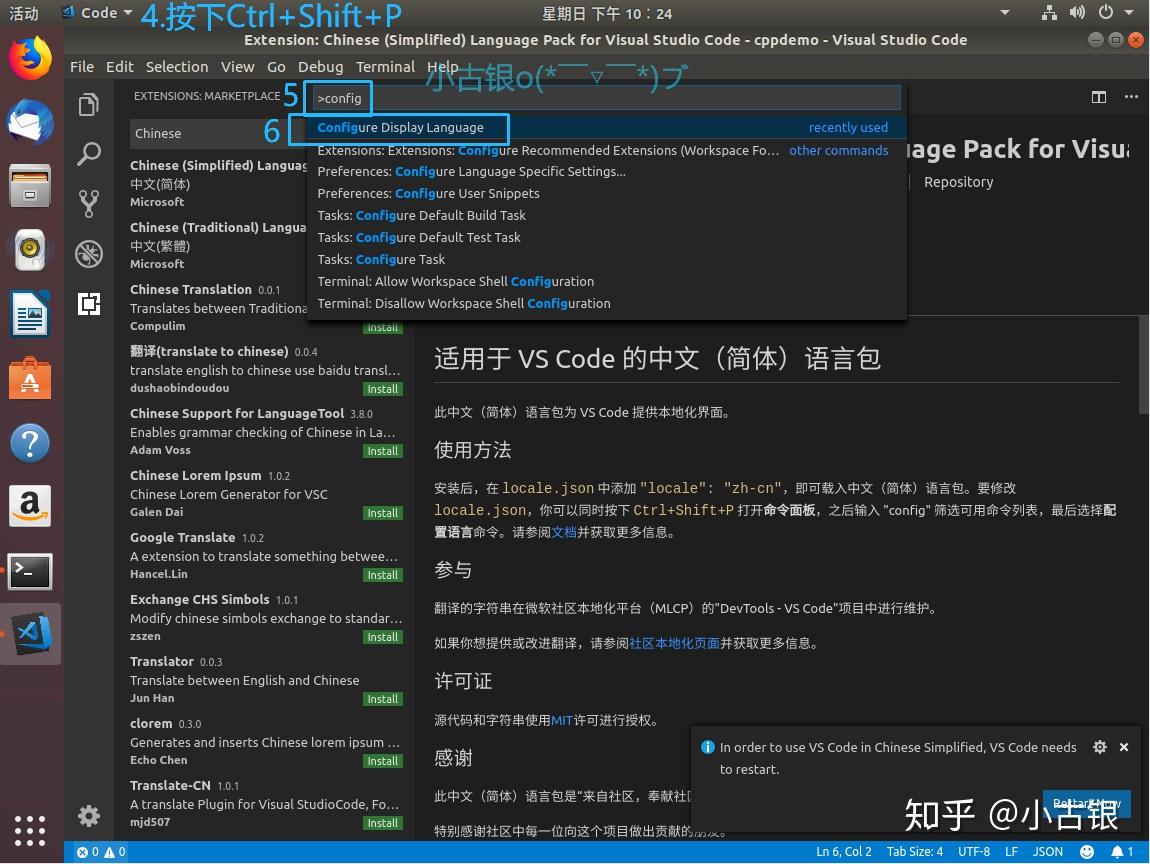

- #Task.json visual studio code ubuntu how to#
- #Task.json visual studio code ubuntu install#
- #Task.json visual studio code ubuntu update#
- #Task.json visual studio code ubuntu full#
If you want to try it out for yourself, you can follow the instructions he has laid out. I've maintained the project for a few years now and it has expanded from providing binaries for Pi to providing support and tools to get VS Code running on low-end ARM devices that might not otherwise support it like Chromebooks (which make up about 60% of the devices in schools now). Jay Rodgers released an open-source project that performs nightly builds of VS Code for Raspberry Pi and Chromebooks. Unofficial community builds for Raspberry Pi and Chromebooks Linux (Red Hat): Red Hat Enterprise Linux 7, CentOS 7, Fedora 23.Linux (Debian): Ubuntu Desktop 14.04, Debian 7.VS Code has been tested on the following Operating Systems: Minimum hardware and software requirementsīefore we get into extensions, let's talk briefly about what the minimum requirements for running VS Code are.Ī computer bought in the last few years with modest specifications should be able to run VS Code without any issues. Then I will outline how you can audit the performance of your existing extension suite, and give some general performance tips. I will also grade the performance of some popular extensions. In this article, I will explain the factors that affect the performance of an extension. It has a tight set of core features, and you can add extra features through extensions.īut performance will inevitably be affected as your collection of extensions grows.ĭo you evaluate the performance of an extension before installing it? What do you do if the startup of VS Code grows? From the absence of people writing about this topic, I guess people don't know.
#Task.json visual studio code ubuntu install#
Now, anyone can create the same environment by running the pip install -r requirements.txt command to reinstall the packages.Īnother way to activate the environment is by running source myvenv/bin/activate (Linux/macOS) or myv env\Scripts\Activate.ps1 (Windows).Visual Studio Code (VS Code) is designed to be lightweight.

In the terminal of the activated virtual environment, we can run: pip freeze > requirements.txtĪs we can see, in our folder, there is the requirements.txt file as well as the myenv folder. Using the pip freeze command we can generate the requirement.txt file based on the libraries that we installed in our virtual environment.

#Task.json visual studio code ubuntu update#
Then run Terminal: Create New Terminal (Ctrl+Shift+`)) from the Command Palette, that opens a new python terminal and in parallel it activates the virtual environment.Ĭonfirm that that new environment is selected (Hint: look at the blue status bar at the bottom of the VS code) and then update the pip in the virtual environment: python -m pip install -upgrade pipįinally, let’s install the pandas and flask libraries python -m pip install flask Then, select the Python: Select Interpreter command and then the environment that we created “ myenv“:

Then In VS Code, open the Command Palette ( View > Command Palette or (Ctrl+Shift+P)). Then, we can open the folder “ venv_example” from the VS Code using the File > Open Folder command. Sudo apt-get install python3-venv # If needed Within this folder, we can create a virtual environment called “ myvenv” by running the following command: # Linux Create a Project Environmentįor this example, we call our project “ venv_example“, and we have created a folder with the same name. Finally, it is less risky to mess with your other projects when you work with virtual environments. This is because with the virtual environments, the project is reproducible, and we will need to install only the required libraries as stated in the requirements.txt. Moreover, it is more efficient to work with the necessary only libraries.
#Task.json visual studio code ubuntu full#
When we work on a Data Science project, which can include a Flask API, it is better to have full control over the libraries used in the project.
#Task.json visual studio code ubuntu how to#
In this post, we will provide you a walk-through example of how to work with VS Code and virtual environments. We have provided examples of how to work with conda environments.


 0 kommentar(er)
0 kommentar(er)
